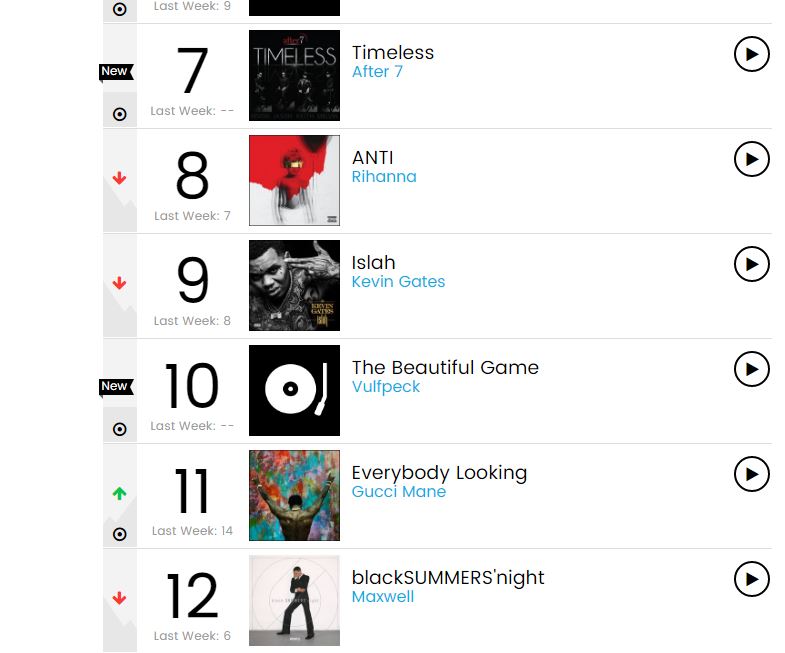This will be both an album review of Vulfpeck’s The Beautiful Game and a general thought on architectural practice.
In general, Vulpeck, the four-or-five-or-six-or-more-piece band from Michigan, has been solidly my favorite band for the past couple of years. Their music infuses funk, R&B, rock, jazz, and you never know what else (Klezmer? Bach? Swing?)– they back it up with undeniable chops, too– and they just seem like they’re having a good time making music.
Take a listen to their latest release and try to give me a definite answer on what genre it could fall into. Hard to do, right? As evidence, Vulfpeck’s music has appeared in as broad a range of music Top Ten charts as German Pop:

….. and R&B!

Part of the band’s essence is versatility. And it’s useful here to think of it not in terms of genres, but more in terms of the kind of music they want to play. Sometimes a musical mind thinks of a tune, and the art is in figuring out how to physically create that sound. Or, say a band starts jamming, and something that just sounds good emerges from that session. If it’s improvised, that good sound may have emerged from a specific hook or beat that the guitarist or drummer heard. This deft skill allows a band freedom to create a palette of sound that transcends categories. Listen to Animal Spirits, the opening track. You hear all kinds of genres in there. The tight drums sound funky for sure, the piano vamps are poppy, the vocals R&B, but then the syncopated claps and the jingly keys make it sound like a theme song from a kid’s TV show. But for a band that sees itself first as a rhythm section, that’s par for the course. Like The Wrecking Crew, The JB’s, or The Muscle Shoals house band, you’re supposed to be able to perform for anyone at anytime. It’s how you 1) sell your services, and 2) make pure music come first. I remember Genres are just gloss anyway, right?
NOW. In architecture, the challenge is the same. You spend your years in school learning Greek column orders, Roman concrete vaults, and cruciform churches from the Middle Ages, you mimic Le Corbusier with cube-houses Mies van der Rohe with kissing planes, you master the art of the airbrushed axonometric like Peter Eisenman, the glossy disjunction of Tschumi or Stirling… then you spend much of your career as a member of the backup band for a famous frontman like Bjarke Ingels, Michael Maltzan, Tom Kundig, Cecil Balmond, or Patrik Schumacher, adapting to their style. If you have foresight you get licensed behind the scenes, studying on the tour bus. Then after a couple of decades, the moment of truth arrives and you start your own firm, the first step of which is having a conscious direction of your own. By now you have absorbed enough variety for something personal to emerge. You have acquired an ability to work with a range of building types, clients, budgets, and styles, depending on the demands of the project.
A purist would say that by definition, this ability transcends style because it runs deep. Everything you design yourself from then on has the weight of all your training behind it, and therefore is coming not from mimicry, but from a palette of experiences.
I’ve spent years as a drummer, a bassist, a backing vocalist, an audio engineer, a marketer, even a groupie, and hopefully in the next few years I will start my own band. A band that can top the high-end residential, performing arts, and research Hot 100 Charts.